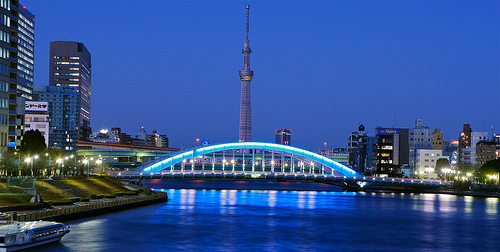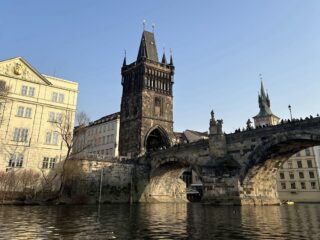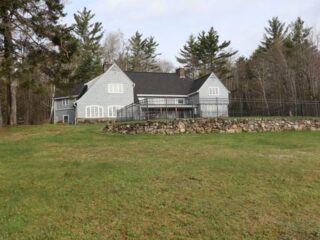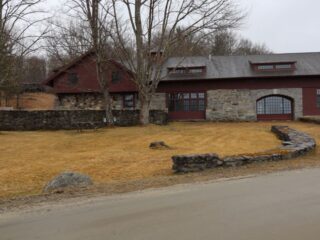 “You got to go there, to know there”, wrote Zora Neale Hurston. Although this African-American writer does not automatically evoke Ireland’s patron-poet, Hurston’s words are a compelling command for any serious student of William Butler Yeats. If you want to truly comprehend the poetry of Yeats, and I mean all of Yeats at his most concretely Irish self, you must visit Ireland. Without seeing, touching, walking–and even drinking–in his footsteps, your understanding of this Nobel Prize winner’s work will be incomplete.
“You got to go there, to know there”, wrote Zora Neale Hurston. Although this African-American writer does not automatically evoke Ireland’s patron-poet, Hurston’s words are a compelling command for any serious student of William Butler Yeats. If you want to truly comprehend the poetry of Yeats, and I mean all of Yeats at his most concretely Irish self, you must visit Ireland. Without seeing, touching, walking–and even drinking–in his footsteps, your understanding of this Nobel Prize winner’s work will be incomplete.
I had a Joycean epiphany at Thoor Ballylee, Yeats’ Tower in County Galway. Yeats and his family lived in Gort from 1917 to 1929. The tower is a 16th century castle fortress that sits along a fast-moving river, near the estate of Lady Gregory, his compatriot in the Celtic Revival. Purchased for £35, Yeats restored the tower to a livable condition. On a wall facing the dirt road, there is a dedication, inscribed into a stone tablet:
I, the poet William Yeats,
With old millboards and sea-green slates,
And smithy work from the Gort forge,
Restored this tower for my wife George;
And may these characters remain
When all is ruin once again.
Although I had been to Ireland more than ten times in a time span of five years, I never thought to visit to the rock fortress out in that small County Galway town. I assumed I would learn nothing from an old pile of rocks. I was, after all, a PhD candidate with Yeats on her orals reading list–and I have an Irish Nana, to boot. What could a tower tell me that books and my professors could not?
I finally visited Thoor Ballylee, while visiting some friends in Craughwell, a village just a few miles away from Gort. On a cold May day, I paid my entrance fee and made my way to the top of the tower. I leaned over the ramparts, watching the green pastures filled with cows below. The river seemed intriguing with its rushing current, so down the stairs I walked. From the bank, I saw a hawk slip into an open window. Intrigued, I climbed upwards once again.
Yeats’ words “Turning and turning in the widening gyre” open the poem “The Second Coming.” Halfway up the winding stones, I looked up and saw steps, and then I turned back, and I saw steps. And as I continued up and around, the metaphor of the gyre–a revolving journey–was made manifest. I thought about Yeats, and this tower, and life, and then, all was clear! Like Gabriel Conroy at the end of The Dead, I suddenly realized what I had missed all these years.
In an instant, my view of Yeats’ poems changed. My awakening was profound. Yeats’ notes in The Dial (1920) explain that the winding gyre is “the end of an age, which always receives the revelation of the character of the next age….” That concept had been so esoteric in the seminar classroom, and yet in the tower, it became apparent: life is an upward journey built upon our past steps. “So that’s what he meant!” I said aloud, to the empty chamber at the tops of the stairs.
When I teach Celtic Literature, I bring in photographs of Yeats’ tower stairs and I assign each student the task of mounting a winding staircase. The task is to climb any circular stairs available–at a church, a hotel, a fire escape–and to think about life’s journey and about Yeats’ poems. And I urge you, reader, to visit the tower, too. Travel to some of Yeats’ special places in Ireland. Take along his poems and find a quiet time (off season; or if in-season, then very early morning or late afternoon) to visit. See if the poems resonate more deeply for you, as they did for me. Will you have an epiphany? You shall never know, unless you go.
Below, I offer a few suggestions of the more memorable and important places to visit in Ireland, with strong connections to William Butler Yeats. There are many more locations associated with Yeats and his family, but these locations will provide a good start for the serious student of Ireland’s famed poet, playwright, orator, senator, statesman, and patriot.
Thoor Ballylee Gort, County Galway
(Four miles northeast of Gort village on the Loughrea Road (N66) / Phone: 091/631436)
In “The Celtic Twilight,” published in 1899, Yeats writes of Thoor Ballylee: “I have been lately to a little group of houses…There is the old square castle….” Ancient myths cloak the fortress and Yeats was fascinated: “I have been there this summer, and I shall be there again before it is Autumn, because Mary Hynes, a beautiful woman whose name in still a wonder by turf fires, died there sixty years ago….” At the tower, where he and his family moved in 1917, beauty inspired his work.
The poem “A Prayer for My Daughter” is very moving. The poem was written for Anne, born in February 1919. The poem is set at Thoor Ballylee. Published in Poetryin November 1919, beauty and a father’s fears infuse the work: “May she be granted beauty and yet not / Beauty to make a stranger’s eye distraught.” These were words written for a little baby girl, who once played in the very walls of the tower.
Coole Demesne, Gort, Galway
(Two miles north of Gort and west of N18)
Lady Augusta Gregory, Yeats’ colleague in the Gaelic Revival, once lived in a grand home at Coole Park. Considered his second home, Yeats stayed here during the summers for many years, starting in 1897. A fire destroyed the 17th-century house, but the estate is now a national park. Dark and lush, the woods evoke the setting of “The Wild Swans at Coole.” Even into the fall, when the “trees are in their autumn beauty,” and “the “woodland paths are dry,” Yeats would stay and seek inspiration from the calm lake, filled with “nine-and-fifty swans.” Swans perhaps reminded Yeats of the ancient Celtic myth, The Children of Lir. The tale is of a jealous stepmother, who turned her stepchildren into swans. King Lir ordered that no swans could be hunted, for fear he would lose his children. To this day, it is unlawful to kill the great birds in Ireland. And if you visit the demesne, you will see the swans at Coole “drift on the still water, / Mysterious; beautiful.”
Another reminder of the past remains: the copper beech autograph tree is still alive, although the carved names of Gregory’s famed literary visitors on its trunk: George Bernard Shaw, Sean O’Casey, AE, John Millington Synge, and William Butler Yeats. The initials are all rather distorted, as the bark has grown. And a fence has been erected by the park staff, to prevent people from adding their own names. However, the tree and the swans together remind us that Yeats was a man who walked here, thought here, and shared friendships here.
Lake Isle of Inisfree, Sligo.
(Drive one mile south from Sligo on the Lough Gill Drive)
Innisfree (“inis” in Irish means “island”) is one of more than twenty islands in Lough (“lake”) Gill. Take the time to walk along one of the forest walks or to simply sit and gaze at the lake that influenced the young poet. In Sligo, Yeats lived with his maternal grandparents. Read “The Stolen Child” (1886), a poem that recalls the Celtic myths of the area, told to the young Yeats by a servant of his uncle, Mary Battle. As you wander above the lakes and through the woods, it is easy to imagine Mary’s tales of the Little People, the dangerous fairy folk of legend.
In his essays “Reveries Over Childhood and Youth” (1916), Yeats writes, “My father read out poetry, for the first time, when I was eight or nine years old. Between Sligo and Rosses Point, there is a tongue of land covered with course grass that runs out into the sea . . . . Sitting there, my father read me The Lays of Rome.” Even in his youth, Yeats connected the land with words. The language of the landscape will connect you to the poet, as you read “The Lake Isle of Innisfree” (1890) at the self-same place. You, too, will “hear lake water lapping with low sounds by the shore….” And perhaps, after your trip is over, you, too, like Yeats will recall the quiet little island in a lake near Sligo town, and you will recall the “bee-loud glade” when you return to your world and “stand on the roadway, or on the pavements grey.” Yeats, rarely seen as a nature poet, offers a glimpse of the solace that only the natural world can provide.
Lisadelle House Drumcliffe, Co Sligo
(Phone: 074/63150)
This manor home is located off the main Sligo-Donegal Road (N15). It is the home of the most famed member of the Gore-Booth aristocracy, the Countess Constance Markievicz. She was one of the leading revolutionaries in the Easter Rising, and a figure in Yeats’ great poem “Easter 1916.” She is the woman, of whom the poet asks, “What voice more sweet than hers / When, young, and beautiful, / She rode to harriers?” In Constance Gore-Booth, Yeats saw a great Eire, personified.
Before you go, dip into “The Man who dreamed of Faeryland” (1891). Yeats was a frequent guest to the Gore-Booth’s limestone manor, one of the Anglo-Irish Big Houses: the main manor home of an Irish village. Take time to walk the grounds and wander “by the sands of Lissadell” as Yeats once did. Perhaps your mind will lose its worries of “money cares and fears” by the time you have explored the pathways to the shore, a refuge for barnacled geese. After the walk, you will know why Yeats came here often to seek solitude.
Toner’s Pub, 139 Lower Baggot Street, Dublin 2
(Phone: 01/676-3090)
This public house has been in business for over 150 years, and one of its great claims of fame is that Yeats drank here. Across the River Liffey on the North side, he and Lady Gregory founded the Irish National Theatre Company, which came to known as the Abbey Theatre. He supported the Irish stage, wrote plays for it, and supported young playwrights like John Millington Synge. Perhaps it is appropriate to read and toast Yeats with his poem “A Drinking Song.” It is an adaptation of Mirandolina, translated by his theater comrade Lady Gregory.
Wine comes in at the mouth
And love comes in at the eye;
That’s all we shall know for truth
Before we grow old and die.
I lift the glass to my mouth,
I look at you, and I sigh.
Despite his penning of a drinking song, Yeats was not much of a public tippler. Legend claims that the rascally Oliver St. John Gogarty invited Yeats (who claimed never to have visited a public house) to Toner’s for a drink, which Yeats downed, rather quickly. He then said something to the effect of well, that’s done. Let’s go. Perhaps you will stay a bit longer and drink a toast to Ireland’s patron poet.
Yeats’ Grave, Drumcliff Churchyard, Drumcliffe, Co. Sligo
(outside Sligo is Drumcliff Churchyard, a Church of Ireland cemetery)
Yeats chose to be interred here, where his grandfather was once a minister. Stop and read the gravestone of Yeats (and his wife). The grave’s occupant composed the epitaph:
Cast a cold eye
On life, on Death
Horseman, pass by!
There is a fine interpretive center at Drumcliff, but a peaceful walk along the river, just near the church, may tell you more about Yeats’ love of Sligo. He chose the site of the grave himself, with Ben Bulben, the great mountain of mythology, in the background. The poem “Ben Bulben” was published just five days after Yeats’ death on Jan 28, 1939. As if in prophecy, he wrote: “Under bare Ben Bulben’s head / In Drumcliff churchyard Yeats is laid.”
However, Yeats’ well-orchestrated plans went a bit awry, as he died in France. Before his passing, he did ask George to move him back to Sligo for his final rest where “the road an ancient Cross” would point the way to the grave. And yet, a world war began and tormented Europe, preventing Yeats’ homecoming for years. It was not until September 1948 that the poet came back to Ireland.
*
More Articles on Ireland
John Millington Synge and the Aran Islands
Finding James Joyce, A Visit to Joyce’s Grave
He Can’t Go On, He’ll Go On: The Legacy of Samuel Beckett









